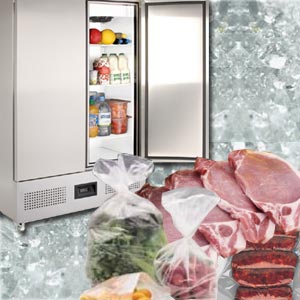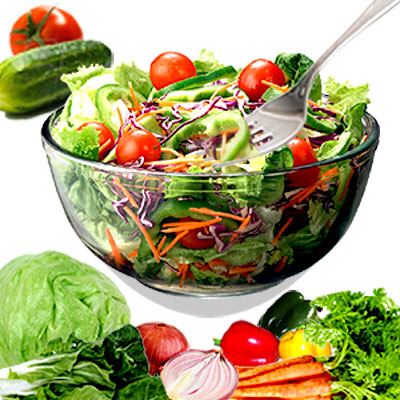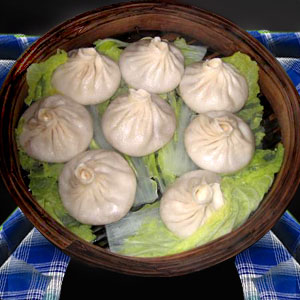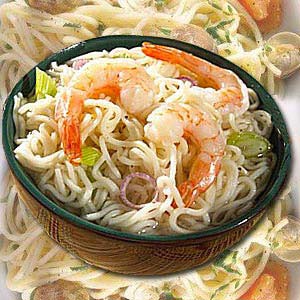Cold Storage Food Tips

Food stored in a refrigerator can be substantially protected from growth of microorganisms and possible chemical changes. Bacteria or viruses do not thrive if refrigerated, below 5°C. Also, food stored at this temperature remains ready for cooking or eating. However, dumping food in the refrigerator will by no means preserve food. You need to ensure that the refrigerator is maintained well, clean with no spills.
For, an unclean refrigerator is a breeding ground for bacteria and can contaminate other foods too. Allow free circulation of air inside the refrigerator to keep food properly chilled. Never load the refrigerator to its optimum capacity. Select suitable containers specifically meant for cold storage to maintain quality as well as prevent drying of foods.
Choosing containers for storing frozen food
Glass containers that are microwave-safe are a good option for freezing food. They are easy to stack and allow you to see the contents. Best of all, they are eco-friendly. If you are storing food in freezer bags, store them flat. You can then stack and organize them better. Press out the air in the bags before freezing. If you wrapping the food in foil, roll them tight.
Tips for cold storage of food
Try and remove all air around the food that is being stored. Wrap foods tightly. Select containers of the right size. If there is air in contact with the food, freezer burn might occur. It appears as leathery spots with color change. Place the containers in the freezer in such a manner that there is sufficient air circulation.
Storing fish in cold storage at home should be done with utmost care. Remember that oily fish stores longer than lean fish; steaks and fillets don't keep as well as whole fish. Cover the fish tightly with plastic wrap or aluminum foil. Be aware of any juices coming from the raw fish. You can also store cooked fish leftovers by refrigerating them as soon as possible.
- Make sure refrigerator is clean. Discard old and unwanted food items, bacteria can be passed to fresh food.
- After shopping, give preference to perishable items and refrigerate them immediately without delay.
- Never mix raw food such as meat/poultry products with ready-to eat items in the refrigerator.
- Cooked food should be stored in the refrigerator or freezer within 2 hours of preparation.
- Store seafood in the refrigerator or freezer.
- Remove seafood from refrigerator just before cooking.
- Food with strong odors should be stored in glass or plastic containers.
- Do not store food with strong odors near milk, cream that are susceptible to tainting.
- Use quality plastic bags to wrap raw meat. Opt for leak proof plastic bags.
- Store raw meat, poultry or fish in the meat drawer.
- Store raw food at 40° F; the freezer, 0° F to slow bacterial growth.
- Cook these items within 3-5 days.
- Store eggs in original cartons on a shelf and not in the door.
Top of the Page: Cold Storage Food Tips
Tags:#cold food storage
 Food and Nutrition Facts
Food and Nutrition Facts Chamomile
Parsnip Soup
Dim Sum
Gazpacho Soup
Whole Grain Cereal
Jicama Nutrition
Bok Choy Stir Fry
Chia Seeds Benefits
Teff Nutrition
Kaniwa
Flax Seed
Wheatgrass Benefits
Kelp Benefits
Types of Chili Peppers
Medicinal Benefits of Pomegranate
Arugula Leaves
Maca Root
Pitaya Fruit
Benefits of Celery
Leek
Asparagus Benefits
Oyster Stew
Oyster Mushroom
Lupin Beans
Quinoa
Freekeh
Extra Virgin Olive Oil
Dill Pickle
Sauerkraut
Fat Burning Foods
Nutrition Chart
Food Combining
Calorie Counter
calories ...
Non Alcoholic Beverage
Punch Recipes
Food Label Nutrition
Homemade Sausages
Cooking Steak
Eating on a Budget
Budget Friendly Recipes
Quick Recipes
 Healthy Packed Lunch
Healthy Packed Lunch Overnight Oats Recipes
Eggplant Casserole
Brunch Recipes
Burrito Recipes
Muffin Recipes
Cupcake Frosting
Apple Crisp
Stir Fry Cooking
Seafood Salad Recipe
Cooking Corn on the Cob
Finger Food Recipe
Sandwich Recipe
Bread Stuffing Recipes
Easy Chili Recipes
Picnic Recipes
Edible Mushroom Recipes
Mushroom Soup Recipes
Dip Recipe
Tapas Recipe
Corned Beef Recipe
Canned Salmon Recipe
Tilapia Recipes
Crumb Cake
Flourless Chocolate Cake
Regional Food
 Lasagna Recipe
Lasagna Recipe Peruvian Ceviche
Chinese Food Recipe
Vietnamese Food Recipe
Malaysian Food
Korean Food Recipe
Indian Curry Recipe
Edible Rice Paper
Mexican Food Recipe
Quesadilla
Guacamole Dip
Italian Food Recipe
Spanish Food Recipe
Kosher Food
Falafel Recipe
Tandoori Chicken
Noodles
Canape
Couscous
Meatloaf
Chowder
Gumbo Recipe
Crockpot Recipes
Moroccan Food
Healthy Food
Pre Workout Snack
Matcha Tea
Simple food Swaps to Lose Weight
Foods to Beat Stress
Foods to beat Insomnia
Bone Density Foods
Prebiotic Foods
Kefir Grains
Agave Nectar
Spicy Trail Mix
Pesto Sauce
Homemade Hummus
Crab Cake Sauce
Bamboo Shoots Nutrition
Lemon Grass Plant
Butter Beans Recipes
Loose Green Tea
Seaweed Nutrition
Healthy Food
Low Fat Granola Bar
Steel Cut Oatmeal
Fruit Pizza
Pizza Toppings
Green Smoothie
Healthy Meal Planning
Delicious Mealtime Recipes
Heart Healthy Fats
Healthy Heart Recipe
Healthy Dinner Recipe
Healthy Dessert Recipe
Healthy Fast Food
Healthy Kid Recipe
Probiotic Food
Diabetic Friendly Foods
Fruit Salad Recipe
Bread Pudding
Tofu Recipe
Oat Bran
Broccoli Salad
Avocado Recipe
Iron Rich Food
Brain Foods
Antioxidant Food
Natural Diuretic
Low Fat Cooking Tips
Rice Pilaf Recipe
Low fat Chicken Recipe
Food Tips

Sous Vide Cooking Technique
Natural Sugar Substitute
Stevia Sugar Substitute
Sunflower Seeds Nutrition
Bouquet Garni
Cake Decorating Tips
High Satiety Foods
Thanksgiving Dinner
Safe Food Storage
Frozen Food Storage Tips
Cold Storage Food Tips
Leftover Recipe
Food Pyramid
Dairy Free Food
Microwave Cooking
Food Intolerance
Homemade Ice Cream
Apple Cider Vinegar
Benefits of Honey
Beverage Cooler
Food Poisoning Symptom
Food Allergy Symptom
Food Addiction
Top of the Page: Cold Storage Food Tips
Popularity Index: 101,087

